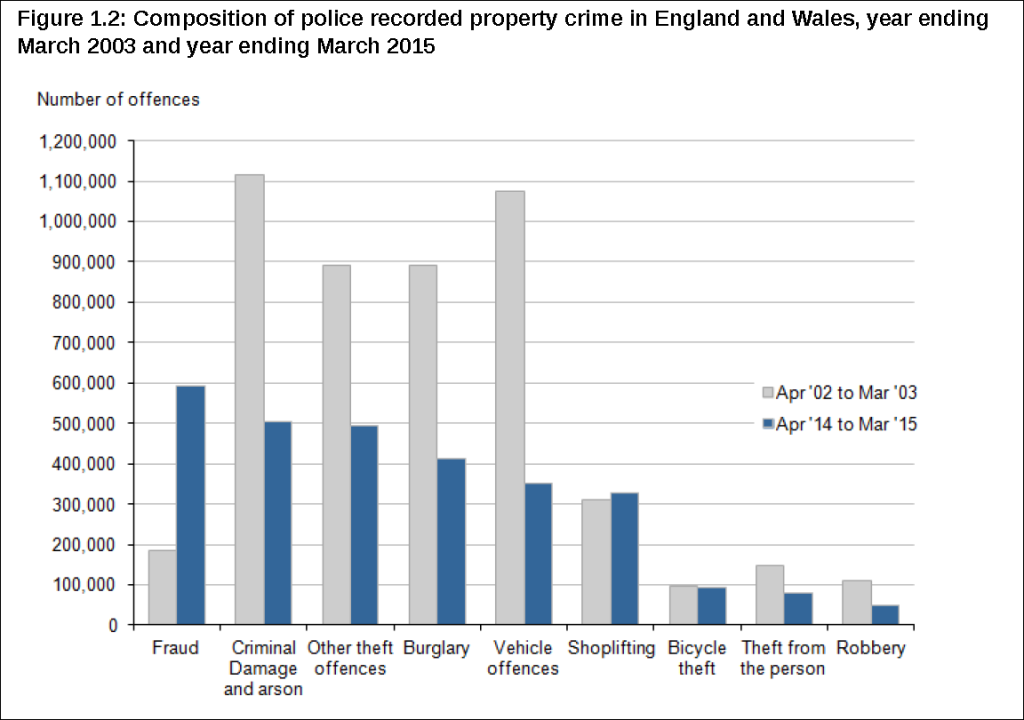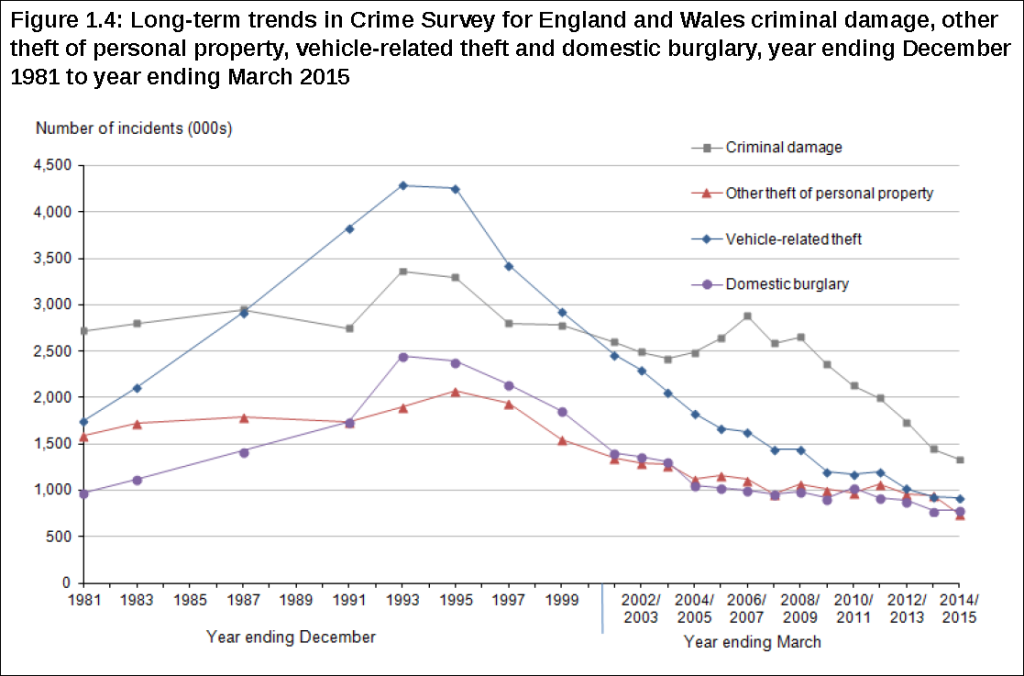Property crime keeps falling
A recent (26 November 2015) Statistical Bulletin from the Office for National Statistics “Focus on property crime, 2014 to 2015” provides confirmation of the significant drop in crime over recent years.
Property crime – a range of criminal activities where the aim is to either steal property or to cause damage to it – is by far the largest category of crime, accounting for 70% of all police recorded crime in 2014/15 and 81% of all incidents measured by the Crime Survey for England and Wales (CSEW) in the same period.
As you can see, since 2003 there have been large drops in most categories except that of fraud (which has trebled) and shoplifting (slightly up):
Main findings
- Cash and wallets or purses continue to be stolen in a high proportion of theft offences. However, as more people carry valuable electronic gadgets, these too have become desirable targets. For example, the latest data from the CSEW indicate that about half of theft from the person incidents involved the theft of a mobile phone.
- The proportion of individual mobile phone owners experiencing theft in the year ending March 2015 was 1.2%, equivalent to 538,000 people. This is compared with 1.7% in the previous years CSEW, a reduction of 246,000 victims. This reduction may, in part, be explained by improvements to mobile phone security and theft prevention.
- The value of items is an important factor in driving trends in theft. Metal theft provides a good example of this, with increases seen between 2009/10 and 2011/12, which corresponded with a spike in metal commodity prices. However, the most recent metal theft data from the police show that levels have continued to fall, with the 27,512 offences recorded during 2014/15 representing a decrease of 35% compared with 2013/14. These falls are also likely to reflect legislation introduced to tackle metal theft.
- The 2014/15 CSEW showed that 4.6% of plastic card owners were victims of card fraud in the previous year, a much higher rate of victimisation than traditional offences such as theft from the person (0.9%). Estimates of the prevalence of plastic fraud have shown declines since peak levels in seen in 2009/10 (6.4%).
- Consistent with previous years younger age groups were generally more likely to be victims (except for plastic card fraud and criminal damage) than older age groups for most property crime types, according to the 2014/15 CSEW.
- Those living in urban areas were more likely to be victims than those living in rural areas for most property crime types.
- Respondents living in the most deprived output areas were most likely to be victims of household property crime offences such as burglary, vehicle-related theft and bicycle theft.
- Interestingly, the characteristics of plastic card fraud victims were different from other types of property crime in many respects. In particular, the likelihood of victimisation did not vary significantly by age, those living in rural areas had a similar likelihood of victimisation compared with those living in urban areas (4.7% and 4.6% respectively), and victimisation was greater in higher-income households (6.4%) compared with those with a lowest incomes (3.4%).
[divider]
Dropping off a cliff
The extent of the fall in property crime is hard to exaggerate since its peak in the early 1990s as this graphic showing very common crime types demonstrates:
Research from the Home Office – and a recent article by Andrew Brown in response to these statistics – argue that the drop in property crime mirrors the substantial rise in the availability of drug treatment and a drop in the number of people addicted to heroin and/or crack cocaine.
It’s certainly my view that the availability of more accessible drug treatment is one of the key drivers behind the drop in crime.










